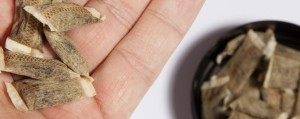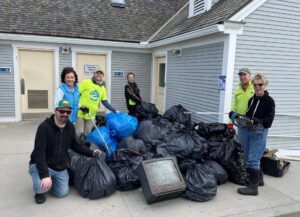 HYANNIS – One good look at “dip lip” and black lung, and you’ll have no interest in tobacco.
HYANNIS – One good look at “dip lip” and black lung, and you’ll have no interest in tobacco.
At least that’s the goal of Peter Scott Hopewood, MD, a general surgeon at Falmouth Hospital with a special interest in cancer. Dr. Hopewood displays models of dip lip (showing the health risks of chewing tobacco) and black lung (showing the damage from smoking) when he speaks to students at local middle schools.
“It’s a critical age” to reach people, he said, to get them to avoid sampling tobacco products.
“The leading cause for cancers is lifestyle,” he said. “For example, the main causes of oral cancers are tobacco products, alcohol and the HPV virus.”
Oral cancers are twice as common in men than in women, according to the American Cancer Society. The ACS estimates that 39,500 people will get oral cavity or oropharyngeal cancer in 2015 and 7,500 people will die of these cancers this year.
Oral cancers are sometimes discovered through self-detection when a patient has pain with swallowing or a swollen neck, said Dr. Hopewood.
“Screening programs are simple: Just open your mouth and someone takes a look,” he said. “Dental hygienists are taught to look for things that don’t look right. We did a public screening last summer at the Cape Cod Baseball League all-star game.”
For every pack of cigarettes you smoke, you lose about 15 minutes of your life, according to Dr. Hopewood. “That adds up. Smokers die 15 years younger – one-third from cancer and two-thirds from emphysema and heart disease,” he said.
One of Dr. Hopewood’s concerns is the popularity of smokeless tobacco, and he supports the efforts to ban baseball players from using it. He pointed to the tragic examples of star hitter Tony Gwynn, who died of salivary gland cancer last year, and former Red Sox pitcher Curt Schilling, who underwent treatment last year for cancer that he said resulted from smokeless tobacco use.
High school athletes smoke tobacco products at a lower rate than non-athletes, but use smokeless tobacco at a higher rate, according to a recent study by the Centers for Disease Control and Prevention.
Data from the national Youth Risk Behavior Surveys showed that use of smokeless tobacco had increased among athletes (10 percent to 11.1 percent) from 2001 to 2013.
“They get into it for the same reason 12-year-olds start smoking. They think it’s a cool thing to do,” University of California Irvine baseball coach Mike Gillespie told the Los Angeles Times.
Dr. Hopewood acknowledged that kicking any kind of tobacco habit isn’t easy.
“It’s like what Gen. Norman Schwarzkopf Jr. said. ‘The truth of the matter is that you always know the right thing to do. The hard part is doing it.’ That applies to behavioral change.”
























Speak Your Mind